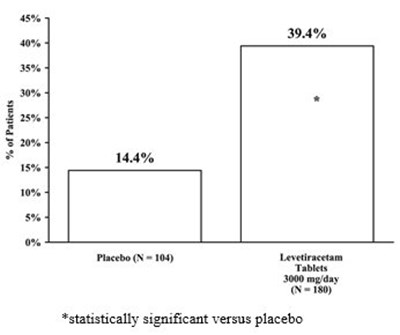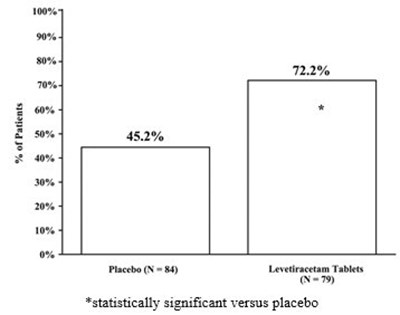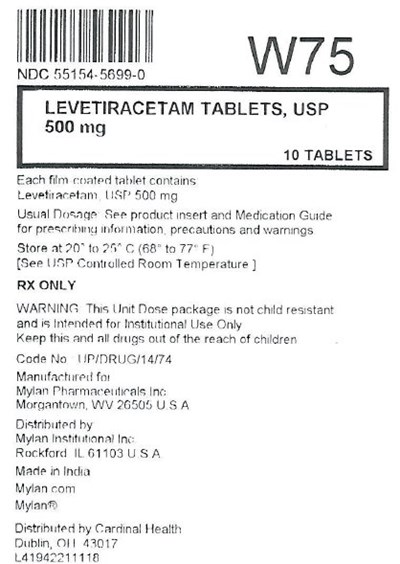Product Images Levetiracetam
View Photos of Packaging, Labels & Appearance
- Formula calculation for patients with renal impairment - a518c4f5 8b66 4770 b971 3534d581ca99 02
- Then CLcr is adjusted for body surface area (BSA) as follows - a518c4f5 8b66 4770 b971 3534d581ca99 03
- Levetiracetam Structural Formula - a518c4f5 8b66 4770 b971 3534d581ca99 04
- b00f2ee7 8be3 4007 ae9e 38060f5ec377 00
- Levetiracetam Oral Solution Weight-Based Dosing Calculation for Pediatric Patients - image 01
- Figure 1: Responder Rate (≥ 50% Reduction from Baseline) in Study 1 - image 02
- Figure 3: Responder Rate (≥ 50% Reduction from Baseline) in Study 3 - image 03
- Figure 2: Responder Rate (≥ 50% Reduction from Baseline) in Study 2: Period A - image 04
- Figure 4: Responder Rate (≥ 50% Reduction from Baseline) in Study 4 - image 05
- Figure 5: Responder Rate for All Patients Ages 1 Month to < 4 Years (≥ 50% Reduction from Baseline) in Study 5 - image 06
- Figure 6: Responder Rate (≥ 50% Reduction from Baseline) in PGTC Seizure Frequency per Week in Study 7 - image 07
Product Label Images
The following 11 images provide visual information about the product associated with Levetiracetam NDC 55154-5699 by Cardinal Health 107, Llc, such as packaging, labeling, and the appearance of the drug itself. This resource could be helpful for medical professionals, pharmacists, and patients seeking to verify medication information and ensure they have the correct product.
Formula calculation for patients with renal impairment - a518c4f5 8b66 4770 b971 3534d581ca99 02
This text provides a formula for calculating the appropriate weight in kilograms for an individual based on their age in years. It also gives a correction factor for female patients. Additionally, it includes a measurement for serum creatinine in milligrams per deciliter.*
Then CLcr is adjusted for body surface area (BSA) as follows - a518c4f5 8b66 4770 b971 3534d581ca99 03

Figure 2: Responder Rate (≥ 50% Reduction from Baseline) in Study 2: Period A - image 04

The text provided shows the percentage of patients that were involved in a study, which was 39.4%. The study compared the results of a new drug with a placebo, and the group that received the drug experienced statistically significant results compared to the placebo group. The text does not provide any further information about the drug or study, and it is not clear what "109" refers to.*
Figure 5: Responder Rate for All Patients Ages 1 Month to < 4 Years (≥ 50% Reduction from Baseline) in Study 5 - image 06

This text appears to be a statistical result of a clinical trial for a medication called "Lovctrsctam Tabis." The trial found that the medication had a success rate of 81%, which was deemed statistically significant when compared to a placebo. The text also includes a percentage of 19.6%, but it is unclear what this refers to.*
Figure 6: Responder Rate (≥ 50% Reduction from Baseline) in PGTC Seizure Frequency per Week in Study 7 - image 07

The text appears to be a mixture of gibberish, therefore I cannot generate a meaningful description. It seems to be a result of poor quality in scanning.*
* The product label images have been analyzed using a combination of traditional computing and machine learning techniques. It should be noted that the descriptions provided may not be entirely accurate as they are experimental in nature. Use the information in this page at your own discretion and risk.





